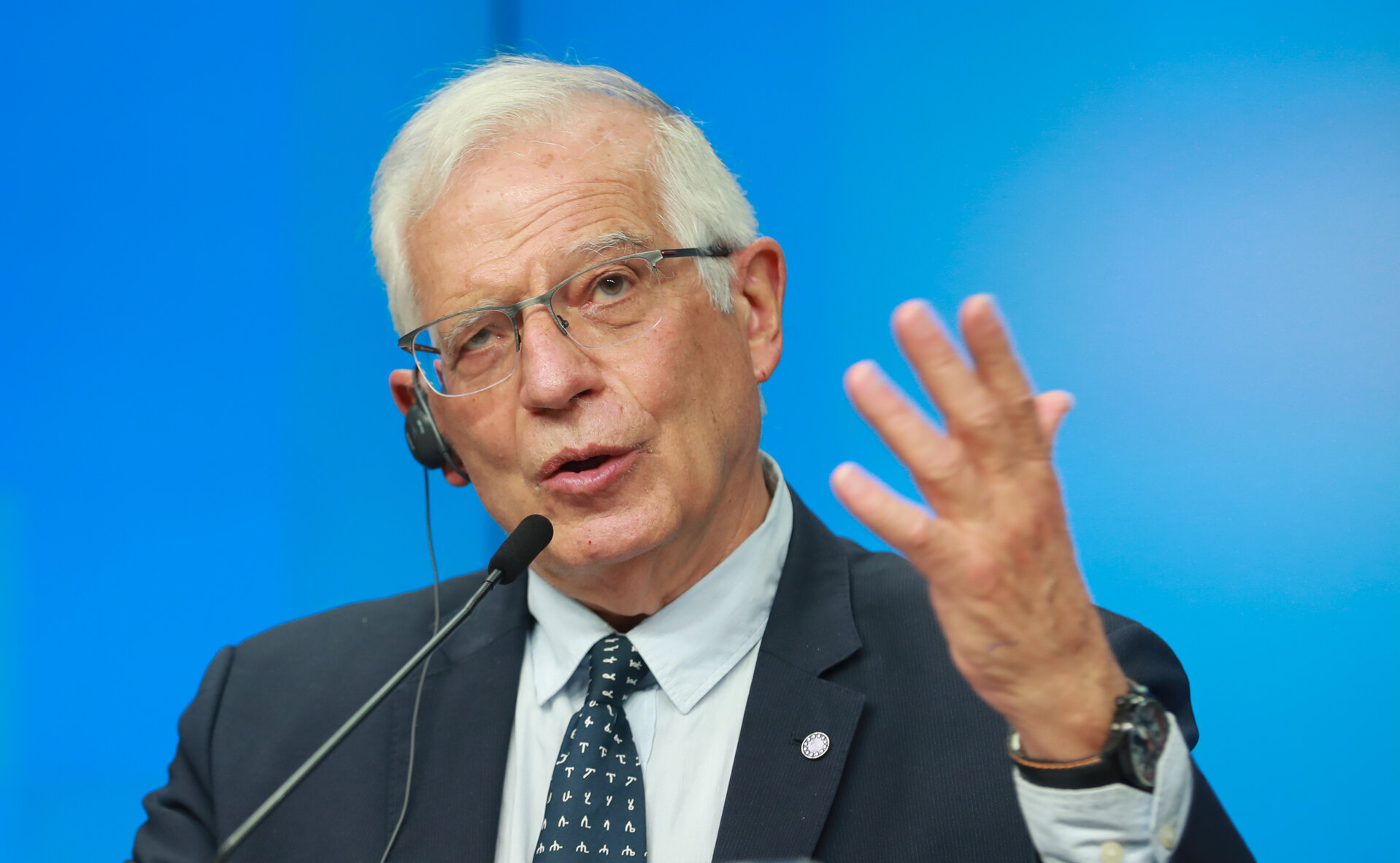A build up of more than 100,000 Russian troops near the Ukrainian border and in the annexed Crimean peninsula is “a matter of concern,” according to a top EU diplomat.
Speaking at a press conference in Brussels this week, EU High Representative Josep Borrell said the Russian military presence had reached unprecedented levels.
“This is the highest military deployment of the Russian military in the Ukrainian borders ever. It’s clear that it’s a matter of concern,” Borrell said.
EU Ministers have sent a clear message of support for Ukraine’s sovereignty and territorial integrity, Borrell says, but no new economic sanctions or expulsions of Russian diplomats are currently planned. The statement followed an exchange with Dmytro Kuleba, Minister for Foreign Affairs of Ukraine, during an informal video conference of the Foreign Affairs Ministers.
The war in eastern Ukraine has been ongoing since 2014. The Ukrainian government and the self-proclaimed and unrecognised republic of Donbas in the east of Ukraine accuse each other of provocations and violations of the ceasefire agreements formally declared in July 2020. In its latest monitoring report, the OSCE Special Monitoring Mission to Ukraine (SMM) said it had recorded thousands of examples of truce violations in the region.
Clashes between the Ukrainian army and pro-Russian separatist forces in the Donbas region and a military build-up by both sides has increased tensions between Kyiv and Moscow. The Russian and Ukrainian authorities blame each other for failing to abide by the Minsk agreements and accuse each other of attempting to start a war.
Official representative of the Ministry of Foreign Affairs of Russia Maria Zakharova recently accused Kyiv of sending new military equipment to Donbas and inflaming tensions between the two sides by seeking support from “western supervisors”. She warned that Russia “will do everything possible to protect” the inhabitants of the Donbas republics in case of further provocative actions by the Kyiv regime.
However, a large and close presence of Russian troops does not worry musician Mikhail Anfalov, from Kharkiv, the largest Ukrainian city near the Russian military deployment.
“There are much more problems than the Russian army near the border,” Mr Anfalov, who was born and raised in Donbas, said. “People are concerned, but everyone got used to this war, unfortunately”.
For Anfalov, president Zelensky’s threats of violence towards Donbas is one possible explanation, but also a reasonable consequence of, Russia’s military activities near Ukraine’s border. The twenty-six-year-old Ukrainian says he is disappointed by the president, who he voted for in 2019, because of what he calls his “empty promise” to resolve the Donbas crisis peacefully.
Russian-Ukrainian conflict and the war in the east of Ukraine
In November 2013, Ukrainian President Viktor Yanukovych backed out of signing a trade agreement with the European Union, opting for closer cooperation with Russia and the Eurasian Economic Union instead. This decision resulted in a wave of protests in the capital city, Kyiv, and culminated in the so-called “Revolution of Dignity” in 2014, also known as the Euromaidan revolution. After an extreme escalation of violence between police and demonstrators, resulting in many deaths in February 2014, the President fled to Russia.
The Russian-Ukrainian conflict began days later. On February 27, 2014, Russian troops without badges arrived on the Crimean Peninsula belonging to Ukraine under the pretext of protecting the rights of ethnic Russians there. They occupied strategically essential points, including the regional parliament, and established a new regional government.
After a disputed referendum in March, which, Russia says, resulted in 96 per cent of the Crimean population voting for a closer connection to Russia, the peninsula was incorporated into Russian Federation. President Putin initially denied the participation of Russian troops in Crimea but later admitted the involvement of special military units. Neither the referendum nor the annexation of Crimea has been internationally recognised.
In a speech on March 18, 2014, Putin spoke of the restoration of the unity of a “historical Russia” of which he considered South Ukraine a part. In the same month, pro-Russian separatists in the Donetsk and Luhansk regions of Donbas in eastern Ukraine held a referendum to declare independence from Ukraine.
The People’s Republic of Donetsk was first proclaimed, followed by the so-called People’s Republic of Luhansk. Although Russia has denied its participation, Ukraine and NATO reported that former and active Russian military members have been directly involved.

Minsk agreements
On September 5, 2014, in Minsk, an agreement about the OSCE-mediated ceasefire (“Minsk I“) was signed. But shortly after signing, pro-Russian separatist troops supported by Russia conquered the strategically important Ukrainian town of Delbalzewe.
On February 12, 2015, Ukraine and Russia (“Minsk II“) signed a new agreement under the mediation of Germany and France (“Minsk II”). The aim was to achieve a sustainable ceasefire, withdrawal of heavy weaponry, and Ukrainian government control throughout the conflict zone. An OSCE mission was commissioned to monitor the agreements.
Since 2014, over 10,000 people have been injured in the war and, according to the German Red Cross, around 2.8 million people have fled the east of Ukraine. Donbas, and its people, will be watching closely over the coming days.








